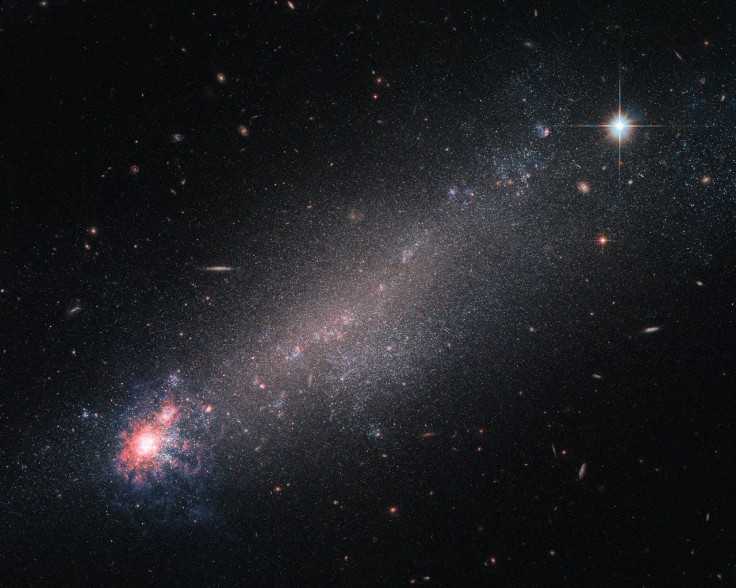Hubble Spies NGC 4861: A Distant Wolf-Rayet Galaxy That Defies Classification

Nearly 30 million light-years from Earth, in the direction of the constellation Canes Venatici — Latin for “hunting dogs” — lies a galaxy that defies categorization. The mass, size and rotational velocity of NGC 4861 — as it's formally known — resemble those of a spiral galaxy, while its diffuse appearance makes it look like a dwarf irregular galaxy.
On Friday, NASA and the European Space Agency (ESA) released an image of NGC 4861 captured using the Hubble Space Telescope. The stunning image shows a strangely comet-like galaxy, containing a bright “head” and a dim “tail.”
“Although small and messy, galaxies like NGC 4861 provide astronomers with interesting opportunities for study,” the ESA said in a statement accompanying the image. “Small galaxies have lower gravitational potentials, which simply means that it takes less energy to move stuff about inside them than it does in other galaxies. As a result, moving in, around, and through such a tiny galaxy is quite easy to do, making them far more likely to be filled with streams and outflows of speedy charged particles known as galactic winds, which can flood such galaxies with little effort.”
What makes this galaxy special is its high concentration of rare category of objects known as Wolf-Rayet stars. These stars, which are at least 20 times more massive than our sun, “live fast and die hard,” exploding as supernova and blasting vast amounts of heavy elements into space used by later generations of stars and planets. Scientists study these celestial giants in order to understand how the largest and most massive stars in the universe evolve.
“New stars are springing into life within the bright, colorful ‘head’ of NGC 4861 and ejecting streams of high-speed particles as they do so, which flood outwards to join the wider galactic wind,” the ESA said. “While NGC 4861 would be a perfect candidate to study such winds, recent studies did not find any galactic winds in it.”
The Hubble Space Telescope was launched aboard NASA’s space shuttle Discovery on April 24, 1990. Since then, it has not only captured photos of an unimaginable number of truly spectacular nebulae and galaxies, it has also peered back over 13 billion years to look at our cosmos in its infancy, giving us, as NASA aptly said in an earlier statement, “a front row seat to the awe inspiring universe we live in."
© Copyright IBTimes 2025. All rights reserved.






















